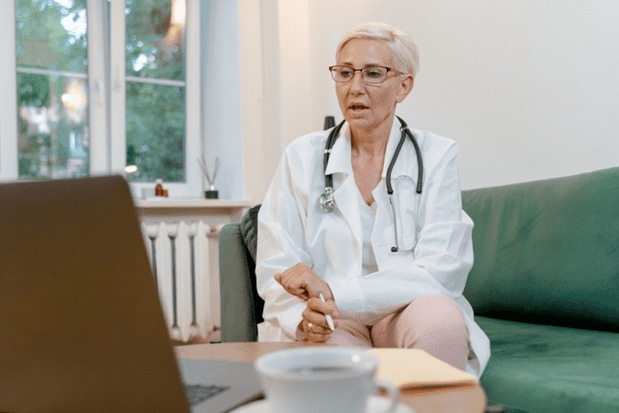5 Telehealth Buzzwords and Trends for 2022
Telehealth is now a standard of U.S. healthcare. Most medical and wellness interactions can be virtual. Some 20.1% of Americans have had at least one telehealth consultation in a recent span of four weeks, according to the U.S. Census Bureau. Telehealth is here to stay but it will not stay the same.
But what is it about telehealth that has patients, providers, and innovators so excited? What are the buzzwords that make up telehealth? And how can we expect telehealth to change in 2022?
1. Wearables and Remote Patient Monitoring
Wearable devices such as fitness trackers are everywhere. In 2020, Pew Research found that some 1 in 5 Americans were wearing a fitness tracker or smart watch. And even beyond these popular wrist devices, estimates suggest that about 50% are using a wearable.
Many wearables now monitor chronic conditions without the need for patients to be seen in person. For instance, devices like the Apple Watch help people with heart and respiratory issues to track pulse, perform ECGs, and document irregularities. And for people managing diabetes, USA Today identified a number of devices a few years ago that track glucose levels.
2. Robotic Process Automation
Businesswire wrote last year that healthcare centers around the nation are continuing to see labor shortages. This means that even from home, patients are experiencing long wait times when trying to schedule or receive care. With the help of Robotic Process Automation (RPA) however, healthcare workers are better able to focus on important priorities.
RPA is software that makes it easier for businesses to automate processes, from customer interaction to payroll management. Precedence Research estimates that RPA will account for a $23.9 billion market by just 2030.
AI chatbots are an example of RPA for patient engagement. Chat software is helping patients get appointments scheduled, addressing FAQs, and recommending treatments or specialists. RPA will mitigate staff shortages in healthcare, to the benefit of patients.
3. Hybrid Telehealth Integration
Telehealth is here to stay. But it will not look the same. SymptomFind concluded that providers will likely incorporate hybrid telehealth/in-person models.
Arrangements will vary but some aspects of regular checkups will be entrusted to patients. Patients may check their own weight, blood pressure, and other basic vitals. Patients can then have quick video consultations with providers with all basic health information at hand.
In-person appointments will then be scheduled according to necessity: if a provider believes a closer examination is warranted, or if a patient is experiencing a specific problem. The annual physical may well become a 15-minute telehealth check-in, saving valuable time for providers and patients alike.
4. Virtual Reality
Virtual reality has a promising future in telehealth. Doctors and nurses can save time by having patients view material, procedures, and even tours of different clinics via their preferred devices.
Medical students benefit with surgical training and case visualizations, which is excellent for educational institutes that have gone remote for classes. With help from STEM experts like Kamau Bobb, students gain both the knowledge and the skills they need to succeed in STEM programs through college and career. Stanford Medicine has been creating 3D models with which doctors can virtually practice before surgical procedures. Med-Tech News has reported that patient outcomes in some procedures improve by as much as 83% after virtual training. VR holds the potential to simplify and improve everything from healthcare education, which you can get at institutes like CALC Institute of Technology, to remote patient care.
5. Internet of (Medical) Things
The IoMT refers to the ever-expanding network of interconnected devices in use in healthcare. It includes everything from wearable devices transmitting health information to online platforms visible to providers, to systems that sense and remind patients (through phones) to wash their hands upon entering medical failures. And the IoMT is growing fast.
Networked devices are used to collect, analyze, and transmit medical information to healthcare networks Patients in rural areas have better care access. Patients with chronic illnesses require fewer costly in-person visits. Healthcare workers get the data they need to track their patients.
Telehealth is here to stay. And its use will only expand to new care areas in the future.








